Since you have mentioned that a Name can have a maximum of 5 Skills, this problem can be done using static query.
-- <<== PART 2
SELECT Name,
MAX(CASE WHEN RowNumber = 1 THEN Skill END) Skill_1,
MAX(CASE WHEN RowNumber = 2 THEN Skill END) Skill_2,
MAX(CASE WHEN RowNumber = 3 THEN Skill END) Skill_3,
MAX(CASE WHEN RowNumber = 4 THEN Skill END) Skill_4,
MAX(CASE WHEN RowNumber = 5 THEN Skill END) Skill_5
FROM
( -- <<== PART 1
SELECT a.Name,
b.Skill,
(
SELECT COUNT(*)
FROM Skill c
WHERE c.id = b.id AND
c.Skill <= b.Skill) AS RowNumber
FROM Name a
INNER JOIN Skill b
ON a.id = b.id
) x
GROUP BY Name
OUTPUT
╔══════╦═════════╦═════════╦═════════╦═════════╦═════════╗
║ NAME ║ SKILL_1 ║ SKILL_2 ║ SKILL_3 ║ SKILL_4 ║ SKILL_5 ║
╠══════╬═════════╬═════════╬═════════╬═════════╬═════════╣
║ jon ║ C++ ║ CSS ║ HTML ║ Java ║ JS ║
║ mary ║ Perl ║ PHP ║ Ruby ║ (null) ║ (null) ║
╚══════╩═════════╩═════════╩═════════╩═════════╩═════════╝
BRIEF EXPLANATION
Let's breakdown it down. There are two parts in the query.
The first part, which is PART 1, of the query generates the sequence of number on Skill for every Name. It just uses correlated subquery to mimic a window function ROW_NUMBER which MySQL does not support.
The second part, PART 2, transpose the rows into columns based on the sequential number generated on PART 1. It uses CASE to test the value of the number and returns the Skill associated on the number. If the number does not match it returns a NULL value. Next, it aggregates the column for every group of Name using MAX() so SKILL will be returned instead of NULL if there is any.
UPDATE 1
SELECT Name,
MAX(CASE WHEN RowNumber = 1 THEN Skill END) Skill_1,
MAX(CASE WHEN RowNumber = 1 THEN Level END) Level_1,
MAX(CASE WHEN RowNumber = 2 THEN Skill END) Skill_2,
MAX(CASE WHEN RowNumber = 2 THEN Level END) Level_2,
MAX(CASE WHEN RowNumber = 3 THEN Skill END) Skill_3,
MAX(CASE WHEN RowNumber = 3 THEN Level END) Level_3,
MAX(CASE WHEN RowNumber = 4 THEN Skill END) Skill_4,
MAX(CASE WHEN RowNumber = 4 THEN Level END) Level_4,
MAX(CASE WHEN RowNumber = 5 THEN Skill END) Skill_5,
MAX(CASE WHEN RowNumber = 5 THEN Level END) Level_5
FROM
(
SELECT a.Name,
b.Skill,
(
SELECT COUNT(*)
FROM Skill c
WHERE c.id = b.id AND
c.skill <= b.skill) AS RowNumber,
b.Level
FROM Name a
INNER JOIN Skill b
ON a.id = b.id
) x
GROUP BY Name
OUTPUT
╔══════╦═════════╦═════════╦═════════╦═════════╦═════════╦═════════╦═════════╦═════════╦═════════╦═════════╗
║ NAME ║ SKILL_1 ║ LEVEL_1 ║ SKILL_2 ║ LEVEL_2 ║ SKILL_3 ║ LEVEL_3 ║ SKILL_4 ║ LEVEL_4 ║ SKILL_5 ║ LEVEL_5 ║
╠══════╬═════════╬═════════╬═════════╬═════════╬═════════╬═════════╬═════════╬═════════╬═════════╬═════════╣
║ jon ║ C++ ║ 3 ║ CSS ║ 4 ║ HTML ║ 5 ║ Java ║ 2 ║ JS ║ 5 ║
║ mary ║ Perl ║ 1 ║ PHP ║ 4 ║ Ruby ║ 3 ║ (null) ║ (null) ║ (null) ║ (null) ║
╚══════╩═════════╩═════════╩═════════╩═════════╩═════════╩═════════╩═════════╩═════════╩═════════╩═════════╝
